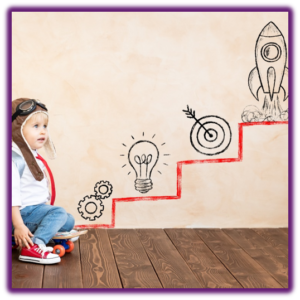Child Development
Practitioners must have a deep understanding of child development, ways to support and enhance this and how, when and where to get additional support if needed.
“In order to understand child development in general, and the development of any particular child, we need to keep in mind three aspects; the child as an individual, their environment and the socioeconomic culture which surrounds the child and family.”
(Siraj-Blatchford et al, 2012; cited as Realising the Ambition, Education Scotland, 2020, p. 15)
“Understanding Children’s Development begins with an understanding of the sequence of how development proceeds. Human development is complex and varied but skills are likely to emerge in a predictable continuum. Early childhood practitioners need to know what comes earlier and later, as well as understand that individual development proceeds at different rates within the contexts of family, community and culture. The arc of possibilities for human development is wide but the progression of children’s development can be anticipated.”
(Early Learning for Every Child Today: A framework for Ontario early childhood settings, 2007, p. 6)
“Children’s brains are built, moment by moment, as they interact with their environments. In the first few years of life, more than one million neural connections are formed each second – a pace never repeated again. The quality of a child’s early experiences makes a critical difference as their brains develop, providing either strong or weak foundations for learning, health and behaviour throughout life.”
(Early Childhood Development, UNICEF)
“The basic architecture of the brain is constructed through an ongoing process that begins before birth and continues into adulthood. Early experiences affect the quality of that architecture by establishing either a sturdy or a fragile foundation for all of the learning, health and behavior that follow.”
(The Science of Early Childhood Development, Centre on the Developing Child: Harvard University, 2021)
“Early development takes place in the context of families and communities and is shaped by the day-to-day experiences and environments of early life. The steady drip of daily life (Barr, 2001) establishes pathways for lifelong learning, behaviour and health that are inextricably linked to the development of the whole child. Genes set the parameters for the basic structures of the developing brain, but it is a child’s interactions and relationships with parents and significant others that establish neural circuits and shape the brain’s architecture (Shonkoff, 2006).”
(Early Learning for Every Child Today: A framework for Ontario early childhood settings, 2007, p. 7)

